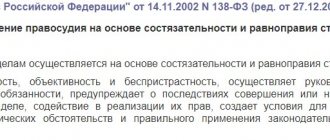Most tenants of office space have to invest additional funds in them: repair, modernize, reconstruct, etc. Such work refers to improvements, which, in turn, are divided into separable and inseparable. The procedure for tax and accounting directly depends on what type of improvement will be classified as.
First of all, I propose to define what inseparable improvements are. The Civil Code of the Russian Federation connects this concept with leased property, but there is no unambiguous formulation in any legislative act. According to established practice, inseparable improvements include changes to an object that improve its technical and functional capabilities and which are inseparable from the object itself (that is, when you change offices, you cannot take them with you without causing harm to the object). The most common question from accountants regarding this definition is: how does this differ from routine repairs? The legislation explains: repairs are aimed at maintaining the property in working condition; during repairs, new qualities do not appear in the object. Consequently, only work on the completion, additional equipment, modernization, reconstruction or technical re-equipment of the facility can be recognized as inseparable improvements.
Position of the courts
However, in reality everything turns out to be not so simple. Accounting practice is full of disputes both between tenants and landlords, and between business entities and tax authorities regarding the classification of improvements as one type or another. The judiciary, in turn, has its own position. Therefore, I propose to examine some controversial cases in which types of construction work were recognized by the court as repair work. For example, renovating office premises. In accordance with clause 5 of Appendix No. 7 to the Rules and Standards for the Technical Operation of the Housing Stock, approved by Decree of the State Construction Committee of Russia dated September 27, 2003 No. 170, the replacement and restoration of individual elements (devices) and door fillings refers to routine repairs. Accordingly, if the work carried out on the leased property is classified as repairs, then the tenant takes it into account as operating expenses.
Or consider landscaping a road section. In the Resolution of the Federal Antimonopoly Service of the Ural District dated May 14, 2008 No. Ф09-3351/08-С3 for JSC Concern Kalina, the court came to the conclusion that the work performed (soil compaction, crushed stone preparation, bitumen pouring, curbing driveways, laying asphalt, paving sites on the main thoroughfares) did not change the technological or service purpose of the road section and did not increase its technical and economic indicators. The work was carried out to maintain roads on the internal territory of the organization in proper condition, therefore, they are repair work.
“Only work on the completion, retrofitting, modernization, reconstruction or technical re-equipment of an object can be recognized as inseparable improvements. »
Third example. In the Resolution of the Federal Antimonopoly Service of the North Caucasus District dated June 18, 2009 No. A53-14011/2008-C5-14 for Cherkizovo-Don LLC, representatives of the tax authority classified the installation and configuration of an office PBX and local computer network as inseparable improvements to fixed assets leased by the company and in in accordance with paragraph. 4 paragraphs 1 art. 256 of the Tax Code of the Russian Federation was considered depreciable property. The court did not support this position and indicated that the tax authority did not provide evidence confirming the fact of the non-separability of the improvements made during the installation and configuration of the equipment.
There were also a number of situations in which judges took the side of taxpayers and concluded that the types of work carried out were specifically repair work.
- Laying brick partitions, plastering and wall cladding, plastering wooden slopes, lining with European laths, leveling the floor, installing a cement screed, dismantling lamps in the building (Resolution of the Federal Antimonopoly Service of the Russian Federation dated July 10, 2007 No. A43-25348/2006-31-814).
- Replacement of old floors, worn-out sewer pipes and water supply pipes, window blocks, painting of walls, ceilings, door blocks (Resolutions of the Federal Antimonopoly Service of Ukraine dated May 22, 2007 No. F09-3656/07-S2, FAS ZSO dated September 25, 2006 No. F04-6044/2006 (26466-A81-31)).
- Replacement of the door along with the door frame (opening in the wall), installation of an additional brick partition and an additional metal partition for one office workplace. According to the Resolution of the Federal Antimonopoly Service of the Moscow Region dated January 18, 2007 No. KA-A40/13128-06-2, the repair work carried out did not cause a change in the technological or service purpose of the building and its premises.
Accounting entries provided that the improvements made are agreed upon with the lessor
D 08...K 60 - Inseparable improvements were made D 19...K 90 - VAT on inseparable improvements D 68...K 19 - VAT was accepted for deduction D 01...K 08 - Inseparable improvements were taken into account D 26...K 02 - Depreciation was calculated on inseparable improvements.
The amount of accrued depreciation is also recognized when calculating income tax. Two options for transferring inseparable improvements to the lessor
- At the end of the lease agreement, inseparable improvements as part of the leased property are transferred to the lessor, the lessor does not reimburse the cost of inseparable improvements: D 02...K 01 - Formation of the residual value of transferred inseparable improvements (the amount of accrued depreciation is written off to reduce the initial cost of inseparable improvements) D 91...K 01 - The residual value of inseparable improvements was written off as other expenses D 91...K 68/VAT - VAT was accrued on the cost of gratuitously transferred inseparable improvements D 99...K 68/Income Tax - PNO was accrued on the residual value of inseparable improvements (not recognized when calculating income tax ).
- At the end of the lease agreement, inseparable improvements as part of the leased object are transferred to the lessor, the lessor reimburses the cost of inseparable improvements: under this condition, the amount of depreciation accrued from the cost of inseparable improvements is not recognized as an expense when calculating income tax. D 76...K 91 - Cost of compensation for inseparable improvements D 91...K 68/VAT - VAT accrued D 91...K 01 - The residual value of inseparable improvements is written off.
It should be borne in mind that redevelopment is an element of both reconstruction and major repairs; it in itself does not determine the nature of the work performed. If, as a result of redevelopment, the technical and economic indicators and functional purpose of the premises have not changed, work to increase the volume of the building (superstructure, extension) has not been carried out, then the redevelopment is recognized as a major overhaul (Resolution of the Federal Antimonopoly Service of Ukraine dated November 28, 2006 No. F09-10509/06- C7).
- Repair of local and telephone networks (Resolution of the Federal Antimonopoly Service NWO dated May 14, 2007 No. A56-15769/2006).
- Installation of ventilation equipment and a thermal curtain (Resolution of the Federal Antimonopoly Service VSO dated June 29, 2007 No. A74-3968/06-F02-3757/07).
- Repair of electrical networks and electrical equipment, installation of air ducts in repair shops (Resolution of the Federal Antimonopoly Service of the North-West District dated July 14, 2005 No. A21-8680/04-C1).
- Replacement of equipment for an integrated security system and fire alarm system (Resolution of the Federal Antimonopoly Service of the Moscow Region dated January 24, 2007 No. KA-A40/13476-06).
- Repair work on internal roads. The judges of the Federal Antimonopoly Service (Resolution No. A68-AP-84/14-05-317/Ya-05-1006/10-05 dated February 20, 2007) supported the taxpayer on a controversial issue, since there was evidence that the work performed changed the quality characteristics of the objects or were carried out under a special reconstruction project, the tax authority did not submit.
- Major repairs of a brick fence (partial replacement of pillars, partial strengthening of the foundation of the fence, new masonry of part of the walls of the fence for a total length of 104.4 m, which is 10% of the total length of the fence (Resolution of the Federal Antimonopoly Service of the North-West District dated August 29, 2005 No. A56-50335/2004)) .
- Repair of external water supply and cable replacement. The judges of the Federal Antimonopoly Service NWO (Resolution No. A56-4658/05 dated 07.07.2005), having collectively assessed the documents available in the case and the evidence presented, rightfully recognized that the costs of repairing the external water supply system and replacing the cable are not capital in nature, but are current costs to maintain equipment in working condition.
What is the difference between separable improvements and inseparable ones?
The separability and inseparability of improvements depends on whether or not the leased asset will lose its properties if these improvements are withdrawn (Clause 2 of Article 623 of the Civil Code of the Russian Federation).
Accordingly, the difference between separable and inseparable improvements is that the former maintain the performance of the asset, and the latter create new properties and functions for the asset or modernize it. However, not all so simple. From the point of view of an owner who wants to maintain a rental asset in working order, for example, replacing old doors and floors with new ones could well be considered as renovation costs with subsequent capitalization. These expenses are aimed at extending the useful life of the asset, although they do not change its useful area and do not create new characteristics. A similar position was expressed by the Russian Ministry of Finance (letter dated February 29, 2014 No. 07-04-18/01). But it is important to understand that if, after the improvements made, the useful area or volume of the asset changes, then its value as an item of fixed assets should also increase (resolution of the AS of the West Siberian District dated March 18, 2019 No. F04-641/2019 in case No. A46-8255/ 2018).
Thus, according to established practice and the essence of the definition, inseparable improvements are the result of capital work performed by the tenant or contractor, and separable improvements are independent things that can be used separately from the leased property. In other words, this is something that the tenant can take with him without damaging the rental item.
However, judicial precedents on this issue are diverse and unpredictable: when and under what circumstances can inseparable improvements pass to the owner beyond his original decision?
For example, if a tenant installs partitions and air conditioners, but after the termination of the lease agreement decides to remove them, then the court may refuse him this, because they cannot be dismantled without harm to the leased premises (Determination of the Supreme Court of the Russian Federation dated April 10, 2017 No. 309-ES17- 2544).
The issue of separability of objects related to electrical supply and air conditioning systems of buildings is really not so simple. If a tenant installs electrical panels, air conditioning units and a sign in a leased asset that was originally equipped with its own electrical and air conditioning system, then dismantling them will require intervention in the utility systems of the entire building. Therefore, such improvements will be recognized as inseparable (decision of the Supreme Court of the Ulyanovsk region dated May 13, 2016 in case No. A72-16150 /2015, resolution 5AAS dated July 8, 2015 in case A51-27347/2014, decision of the RT Court dated April 14, 2015 in case A65-17489 /2013, resolution of the Federal Antimonopoly Service of the Central District dated 04/07/2011 in case A14-5963/2010).
These types of improvements change the functionality of the rental asset, just like a remodel. For example, if a company leases an asset to house a cafe and adds a toilet for customers with limited mobility or for customers with children to the existing toilets, then such improvements should be considered as inseparable. Of course, after the end of the lease period, it will be possible to disassemble everything and return the premises to its original appearance, but this will require repeated intervention in the communications of the entire building, and the owner of the asset will most likely not take this step.
And even the most ordinary replacement of old double-glazed windows and doors with new ones in a rented premises can become a subject of controversy. At first glance, it appears that these improvements can be separated at the end of the lease without compromising the integrity of the office. However, if windows and doors were considered part of the property before the lease was concluded, then replacing them is simply an upgrade to an integral part of that property. In this regard, it is more logical to consider the replacement of double-glazed windows and doors as inseparable improvements (Resolution of the Presidium of the Supreme Arbitration Court of the Russian Federation dated October 26, 1999 No. 3655/99). Of course, it is possible to appoint an examination to determine whether the improvements are separable, but experts issue opposite conclusions (Resolution of the Federal Antimonopoly Service of the North-Western District dated March 28, 2013 No. F07-314/13 in case No. A42-7628/2011).
In the absence of a single strict algorithm for distinguishing between separable and inseparable improvements, it is necessary in each case to consider the costs incurred on their merits and from the point of view of the presence of consequences for the leased asset: its functions will change or simply be superficially updated.
Tax and accounting of the tenant
It should be borne in mind that improvements to the leased property can be made both with the permission of the lessor and without his consent. In the first case, after termination of the lease agreement, the tenant has the right to compensation for the cost of improvements by the landlord. In the second case, you cannot count on reimbursement of costs. Moreover, the latter option is also fraught with the fact that in the tax accounting of the tenant, inseparable improvements made without the consent of the lessor are not subject to depreciation (according to paragraph 1 of Article 256 of the Tax Code of the Russian Federation).
One more nuance: inseparable improvements at the end of the lease agreement are transferred to the lessor free of charge. And on the basis of paragraph 16 of Article 270 of the Tax Code of the Russian Federation, the cost of gratuitously transferred property is not taken into account in taxation; accordingly, the tenant cannot take into account the cost of inseparable improvements as expenses that reduce taxable profit.
Income tax. Inseparable improvements made by the tenant with the consent of the landlord are recognized as depreciable property. If their cost under the agreement is not reimbursed to the lessee, then he can “pay off” it by calculating depreciation during the validity of the lease agreement (clause 17 of PBU 6/01) taking into account the useful life of the object (clause 1 of Article 258 of the Tax Code of the Russian Federation) . By the way, from January 1, 2010, the taxpayer has the right to determine the useful life of inseparable improvements independently. Let me remind you that previously the costs of inseparable improvements were depreciated based on the service life of the property, which increased the depreciation period and did not take into account the real investments of the tenant. Today, depreciation amounts are distributed in accordance with the useful life not of the object itself, but specifically of the inseparable improvement. And the tenant has the right to set this “useful” period himself. In this case, the period designated by it may differ from that accepted by the lessor, but must fit into the classification of fixed assets approved by the Government of the Russian Federation. Explanations of this norm were presented in letters of the Federal Tax Service of the Russian Federation for Moscow dated August 25, 2010 No. 16-15/089245, and the Ministry of Finance of the Russian Federation dated June 1, 2010 No. 03-03-06/1/358.
“I recommend that tenants think through every wording of the lease agreement in advance and reflect all possible scenarios in it. »
Property tax. It is worth noting that capital investments in the form of inseparable improvements taken into account as part of the tenant’s fixed assets are subject to property tax until the end of the lease agreement. This position is confirmed in letters from the Ministry of Finance of the Russian Federation dated November 3, 2010 No. 03-05-05-01/48, dated November 1, 2010 No. 03-05-05-01/46.
VAT. When transferring inseparable improvements free of charge, the tenant is obliged to charge VAT and pay it to the budget (clause 1 of Article 146 of the Tax Code of the Russian Federation, where the provision of services free of charge is recognized as the sale of goods and services).
I recommend that tenants think through every wording of the lease agreement in advance and reflect all possible scenarios in it.
For example, in order for the amount of accrued depreciation on inseparable improvements to be taken into account when calculating income tax, the agreement must provide permission from the lessor to carry out inseparable improvements.
It is also possible to stipulate in the contract that the landlord does not have to compensate the tenant for improvements made. Otherwise, accrued depreciation will not be recognized when calculating income tax.
Accounting entries provided that the improvements made are not agreed upon with the lessor
D 08...K 60 - Inseparable improvements were made D 19...K 90 - VAT on inseparable improvements D 68...K 19 - VAT was accepted for deduction D 01...K 08 - Inseparable improvements were taken into account D 26...K 02 - Depreciation was calculated on inseparable improvements.
The amount of accrued depreciation is also not recognized as an expense when calculating income tax. At the end of the lease agreement, inseparable improvements as part of the leased property are transferred to the lessor, the latter does not reimburse the cost of inseparable improvements:
D 02...K 01 - Formation of the residual value of transferred inseparable improvements (the amount of accrued depreciation is written off to reduce the initial cost of inseparable improvements) D 91...K 01 - The residual value of inseparable improvements is written off as other expenses D 91...K 68/VAT - VAT accrued on the cost of gratuitously transferred inseparable improvements D 99...K 68 - PNO has been accrued for the residual value of inseparable improvements (not recognized when calculating income tax).
Important subtleties and tips for drawing up
You need to write a document taking into account the nuances. It is worth saying that the concept referred to is not in the Civil Code; it is used by sellers who have made repairs, because they have to pay inflated taxes. The receipt is issued so that the seller pays less tax than he should, therefore, when going to the notary, it should not be attached to the purchase and sale agreement.
This option for compensating for the improvements made must be discussed in advance and in detail, because it is not included in the official contract. If the purchase and sale document was issued by a notary service department and certified, then this point does not apply to the receipt; it is the result of additional agreements between the parties to the transaction.
The receipt allows not only the seller to pay less taxes, but also the buyer, in case of termination of the contract, to receive the amount under the contract and the money that was paid for improvements in full. If a couple of people buy an apartment, then a receipt of this sample must be prepared for each participant in the agreement.
Video on the topic:
Conclusion
Since the purchase of the leased property took place during the validity period of the lease agreement, we come to the conclusion that the uncompensated inseparable improvements were not transferred to the lessor. That is, in accordance with Article 39 of the Tax Code of the Russian Federation, there was no sale, and accordingly there is no object of VAT taxation.
Taking into account the above provisions of the law and judicial practice, we can draw the following conclusion. If the property was purchased by the tenant during the validity period of the lease agreement, then VAT should not be charged on inseparable improvements made by him earlier, but not transferred to the lessor.







